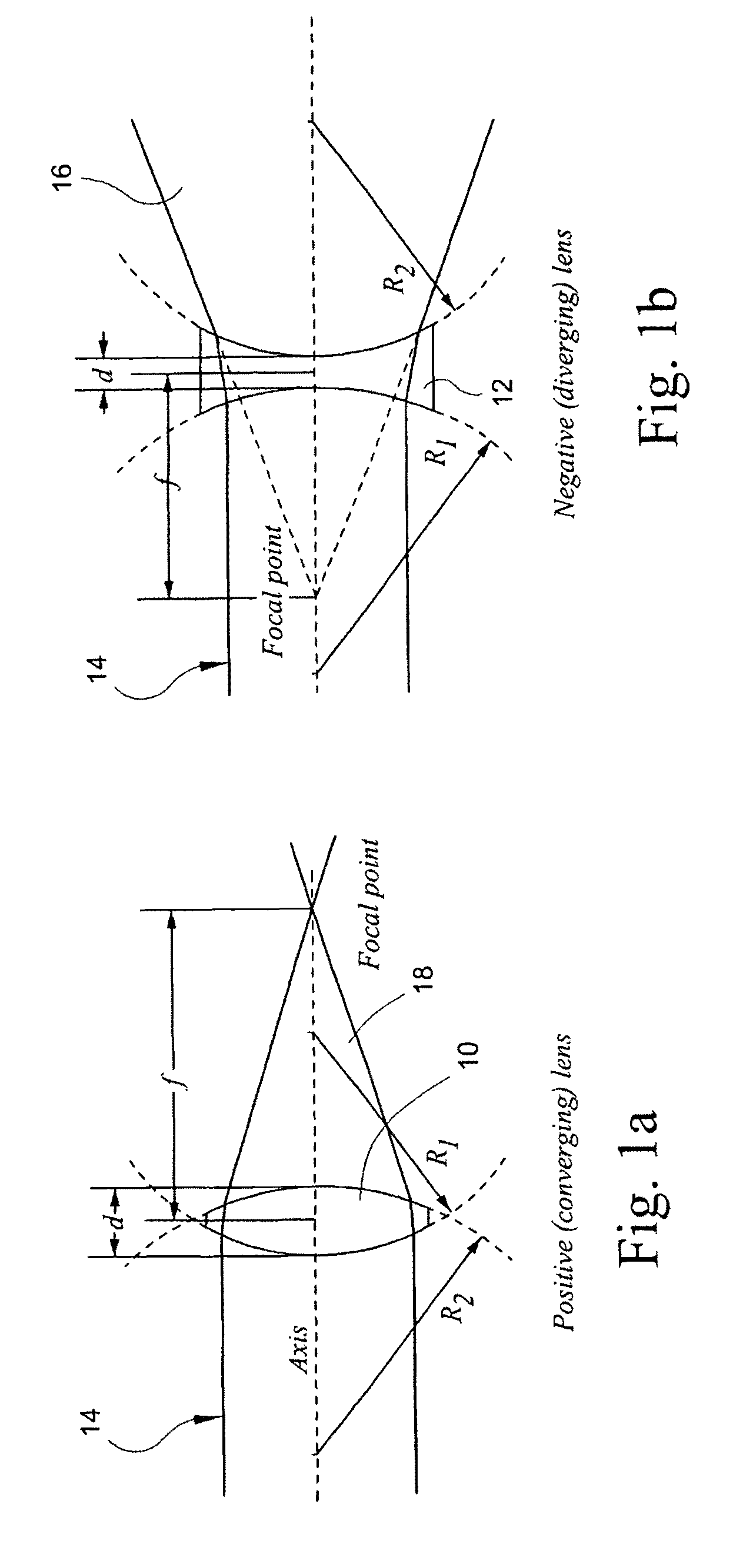Method of fabricating small dimensioned lens elements and lens arrays using surface tension effects
a technology of surface tension and lens elements, applied in the field of lenses, can solve the problems of low difficult control or reproducibility of fabrication processes, and inability to achieve reproducible results, and achieve the effects of improving the yield of these methods, and improving the quality of lens components
- Summary
- Abstract
- Description
- Claims
- Application Information
AI Technical Summary
Benefits of technology
Problems solved by technology
Method used
Image
Examples
Embodiment Construction
[0029]The present invention is directed to a method of fabricating lens elements and lens arrays using the surface tension of the lens material(s) to develop a desired lens surface contour or shape and thereby make a high performance refractive lens. A variety of different types of lenses can be fabricated using the method of the present invention, including concave or convex lenses, as well as many others types of lenses. Additionally, lens arrays composed of a multiplicity of lens elements can also be made using the method of the present invention. Furthermore, the method of the present invention allows the fabrication of lens elements and lens arrays having an unprecedented small lateral lens diameter, as well as extremely smooth surface finishes, which is not possible with existing methods of lens and lens array fabrication. The present invention also provides an extremely low cost and relatively simple production method for lens elements and lens arrays, as compared to existing...
PUM
| Property | Measurement | Unit |
|---|---|---|
| contact angle | aaaaa | aaaaa |
| contact angle | aaaaa | aaaaa |
| contact angle | aaaaa | aaaaa |
Abstract
Description
Claims
Application Information
 Login to View More
Login to View More - R&D
- Intellectual Property
- Life Sciences
- Materials
- Tech Scout
- Unparalleled Data Quality
- Higher Quality Content
- 60% Fewer Hallucinations
Browse by: Latest US Patents, China's latest patents, Technical Efficacy Thesaurus, Application Domain, Technology Topic, Popular Technical Reports.
© 2025 PatSnap. All rights reserved.Legal|Privacy policy|Modern Slavery Act Transparency Statement|Sitemap|About US| Contact US: help@patsnap.com



